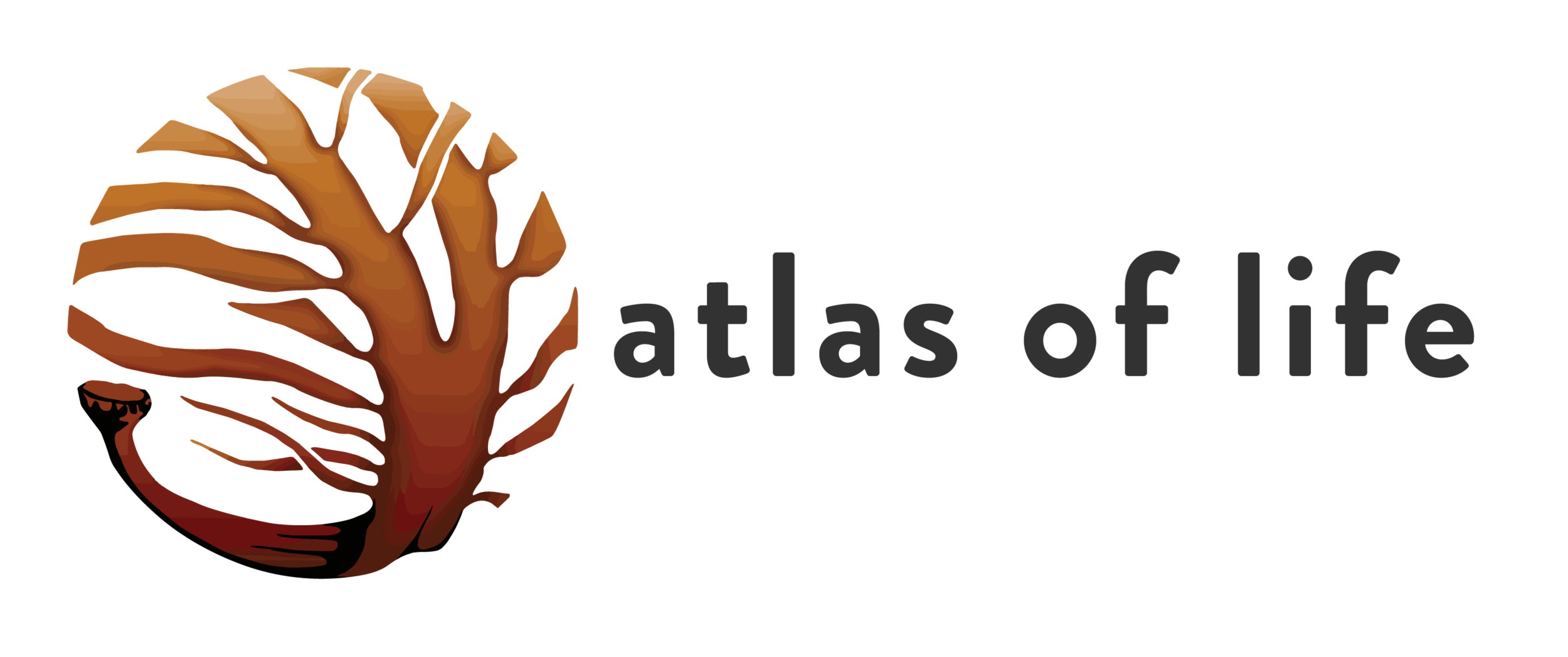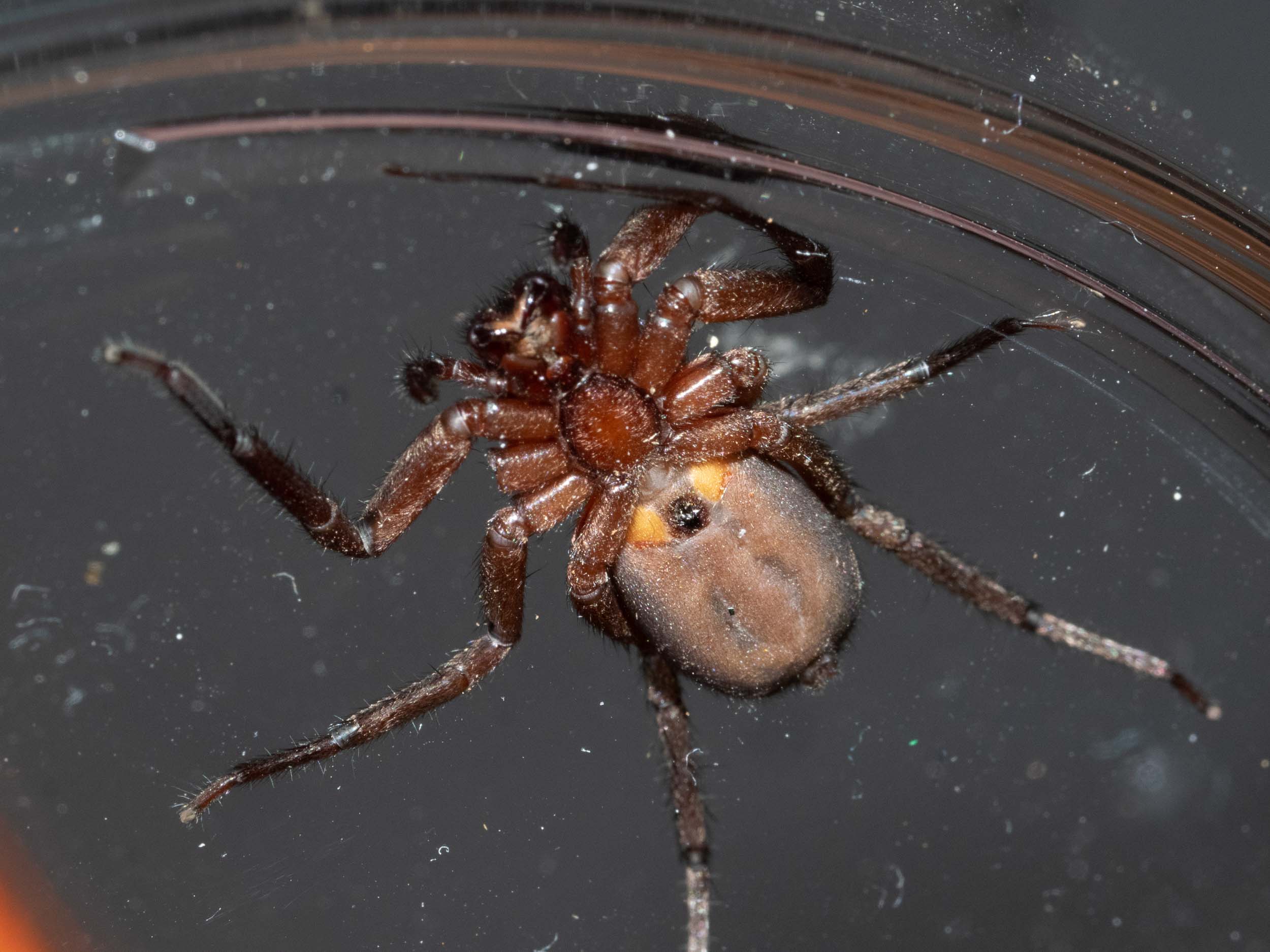August Workshop: All Things Arachnid
Atlas Naturalists Workshop
10th August, 2019
Summary & Follow-up
To mark the first day of National Science Week for 2019, we held a special topic workshop. Lots of information, lots of people, and lots of spiders and other arachnids.
The stars of the show
On the morning after the workshop my first task was to return all the ‘volunteer’ spiders to their homes. I can happily report that they all appeared well, apparently taking the car trip and spotlight in their strides.
But before returning them I released each onto the kitchen bench in turn, for a final photo shoot.
You can imagine my surprise - and excitement! – when I discovered that the Sac Spider had laid a clutch of eggs! I’d found her on the back wall of the house, at night, a couple of days before. At the time I noticed that she was fat and docile, but didn’t think much about it. She will be released later, as for now she’s busy guarding her clutch. We have a glass tank for temporary arthropod accommodation. It is now a maternity ward.
BREAKING NEWS! Remember the fat-bodied, sluggish desid spider? Overnight on Saturday she laid a clutch of eggs in a beautiful silken egg case. Had it been just a few hours earlier she would have really been the star of the workshop! Family: Desidae
She is now guarding her eggs in the petri dish. I can’t really release her – her egg case is stuck to the dish, so we’ll continue to care for her and her developing babies for a few weeks more. Family: Desidae
The tiny Jumping Spider heading out to explore. Family: Sparassidae
She turns to look at me … as Jumping Spiders do. Her large middle eyes are like telephoto lenses, capable of excellent form vision. Family: Sparassidae
The elaborate ends of the pedipalps are a give away. This spider is definitely a male! Also note the many sensory hairs on the pedipalps. He has now been returned to his home under a fallen log. Family: Stiphidiidae
This spider is a female. The dark spot between the two book lungs, on the underside of the abdomen, is the telling feature. Family: Gnaphosidae
Spiders don’t defecate very much. Well, not compared to mammals and birds, anyway! This White-tailed Spider left this single drop after 48 hours in the petri dish. And she was one of only a couple who ‘pooped’ at all! Most dishes were perfectly clean. Family: Lamponidae
Another spider left a small deposit, this one a little different in shape and design. Quite artistic, really. It contains waste material from the gut as well as from the spider equivalent of kidneys (the Malpighian tubules).
The markings on the underside of the abdomen are a key feature in distinguishing species of wolf spiders. Looking up through the base of a petri dish is perfect! Family: Lycosidae
The eye pattern of wolf spiders is familiar to all fans of the Harry Potter movies. Looks rather like Aragog, doesn’t she!?! Family: Lycosidae
Now back in the usual spot on the wall of the house, but this Two-tailed Spider seems darker than usual. They are reported to change colour to blend in with their surroundings, so perhaps it will lighten up again now that it’s back home. Family: Hersiliidae
During the workshop, Allan and others puzzled over the deep dimples on this spider’s abdomen. I can confirm that they mark the sites of muscle attachment (apodemes) - internal extensions of the cuticle that provide surface area and strength for the strong muscles that depress the abdomen.
Presentations: arachnid evolution & diversity; spider biology
Paul started the workshop by describing the evolutionary relationships between arthropods, what distinguishes an arachnid from other arthropods, and then how to distinguish four particular groups of arachnids: harvestmen (Opiliones); mites & ticks; scorpions; and – of course – spiders.
Together we then took a quick look at spider biology. Their feeding, their senses, their breeding, and their uses of silk.
It was a packed session, and we appreciate that there was too much for anyone to really take in during such a short time. So we have packaged the presentation slides and notes, and are happy to share them with you as a pdf file.
The pdf includes links to the movies we showed plus a bit of extra text to help make sense of some of the images. You may copy the file and even share it if you like.
Spider identification
The workshop also included a chance to view some live spiders under the microscope, investigating questions such as:
Can you sex the spider?
Do you see any of the other features mentioned during the presentations?
Can you recognise the key features that identify the spider to family?
The sheets describing each of 14 common families (shown in the image above) were based on information from these spider books.
Two excellent books on Australian spider families - see reference section below for full details.
You can download these ‘cheat-sheets’ as a pdf.
NatureMapr as a field guide
Of course the other resource we have for spider identification is our local NatureMapr database.
There are over 100 species of arachnids listed, most with multiple photographs - and all are local species!
Of course, there are many species that as yet are not on these lists. Perhaps you will find one and help build the database!
These listings continue to evolve and grow as people add new images and sighting information.
So if you have a photo taken in our region, why not add it to NatureMapr? The Atlas community will help identify it and it will become a lasting record. If you’ve not added sightings before, or if you’re a bit rusty, here’s some information that may help. And you can always chat with us at one of our Atlas Naturalists events.
Life in a Southern Forest
Paul and I have a variety of spider stories on our own website, Life in a Southern Forest. Of particular interest may be Paul’s blog Getting to know Mygals. It illustrates the processes we follow when trying to learn more about the animals and plants we discover here on the far south coast.
Young naturalists
Keeping us all on our toes throughout the workshop was Jake. His sharp, enquiring mind and enthusiasm for scorpions and spiders helped to make the workshop so enjoyable. We hope he pursues his interest in science and the natural world, and we look forward to meeting up again at future Atlas Naturalists events.
By the way, Jake was quite right. Many scorpions are indeed live-bearers. In addition, the mother provides extended care, carrying the babies on her back until their first moult.
Finally, a special thanks to Linda, Liz, Norm, Jenny and Allan for providing a range of treats for the coffee break! After all, it’s the little things that matter :)
Reference materials
Rainer F. Foelix. 2011. Biology of Spiders (Third Edition). Oxford University Press.
Robert Whyte and Greg Anderson. 2017. A Field Guide to Spiders of Australia. CSIRO Publishing
Volker W. Framenau, Barbara C. Baehr, and Paul Zborowski. 2014. A Guide to the Spiders of Australia. New Holland Publishers.
Elizabeth Pennisi. 2017. Untangling Spider Biology. Science Magazine, 358 (6361), pp288-291
Robert F. Service. 2017. Silken Promises. Science Magazine, 358 (6361), pp293-294
This summary was written by:
Kerri-Lee Harris, 12th August, 2019































